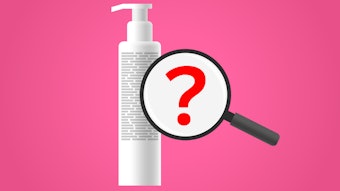Technology transfer across industries carries with it the good and the bad; innovation, the lifeblood of progress, as well as concern for safety. It is interesting to note that 100 years ago, as the U.S. Agriculture Department’s Bureau of Chemistry (the predecessor to the U.S. Food and Drug Administration) launched an investigation of ingredients used to preserve food, The American Perfumer (the predecessor to Cosmetics & Toiletries magazine) examined the use and manufacture of ingredients for the perfumery, perfumed soap and toiletry markets. This article reports some of the key progress made in ingredient regulation in the United States over the past 100 years.
Establishing Roots
The number of U.S. perfumery and toiletry manufacturers grew from 67 in 1880 to 262 in 1900, representing nearly a 400 percent increase. The value of products rose from US$2.2 million in 1880 to more than US$7 million in 1900.1 As the industry grew it became more competitive, and manufacturing costs became a major concern. The early Cosmetic, Toiletry, and Fragrance Association (CTFA) manifest in 1894 as the Manufacturing ’Perfumers’ Association of the United States (MPA) and primarily was the work of five individuals led by New York perfumer Henry Dalley. It also included Bowles Colgate, president of Colgate & Company.1 According to the CTFA, ’Dalley’s motivation for initiating MPA was pending Congressional legislation proposing an increased tariff on imported raw materials, which would affect the cost of producing toiletry goods. With support from the group, Dalley coordinated industry opposition to the legislation.
By 1894, Dalley saw the need for a permanent organization and persuaded a group of colleagues to join him. The MPA was established at Delmonico’s Hotel in New York in October 1894. During its first 10 years, the group focused on furthering the ’industry’s interests regarding tariffs and taxes. In 1941, an intensive lobbying effort was made by the association, but the tariff was enacted, imposing a 20 percent duty on 90 percent of the raw materials used in perfumes and toiletry goods.
In the end, World War I created a timely “push” for the ’industry’s growth, according to the CTFA. Although the war exposed nearly five million American soldiers to French perfume and other toiletry articles and created a demand for them, exports to the United States from France declined because of the war, opening an opportunity for the growing American perfume and toiletries market.
For the complete article, select "Purchase This Article."










